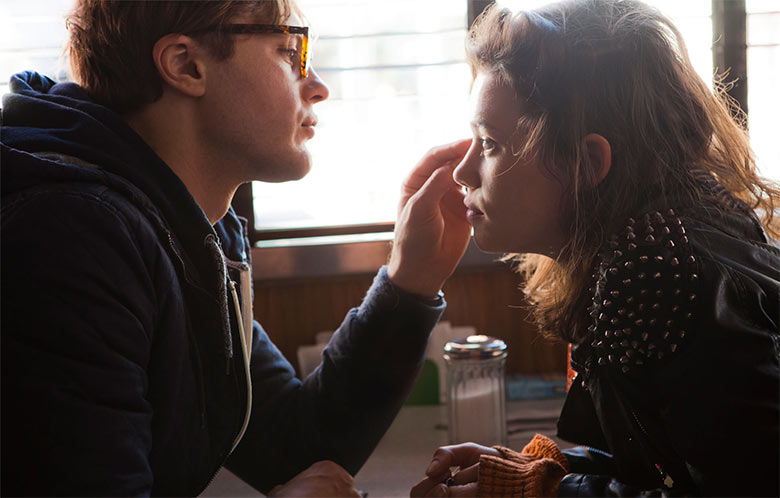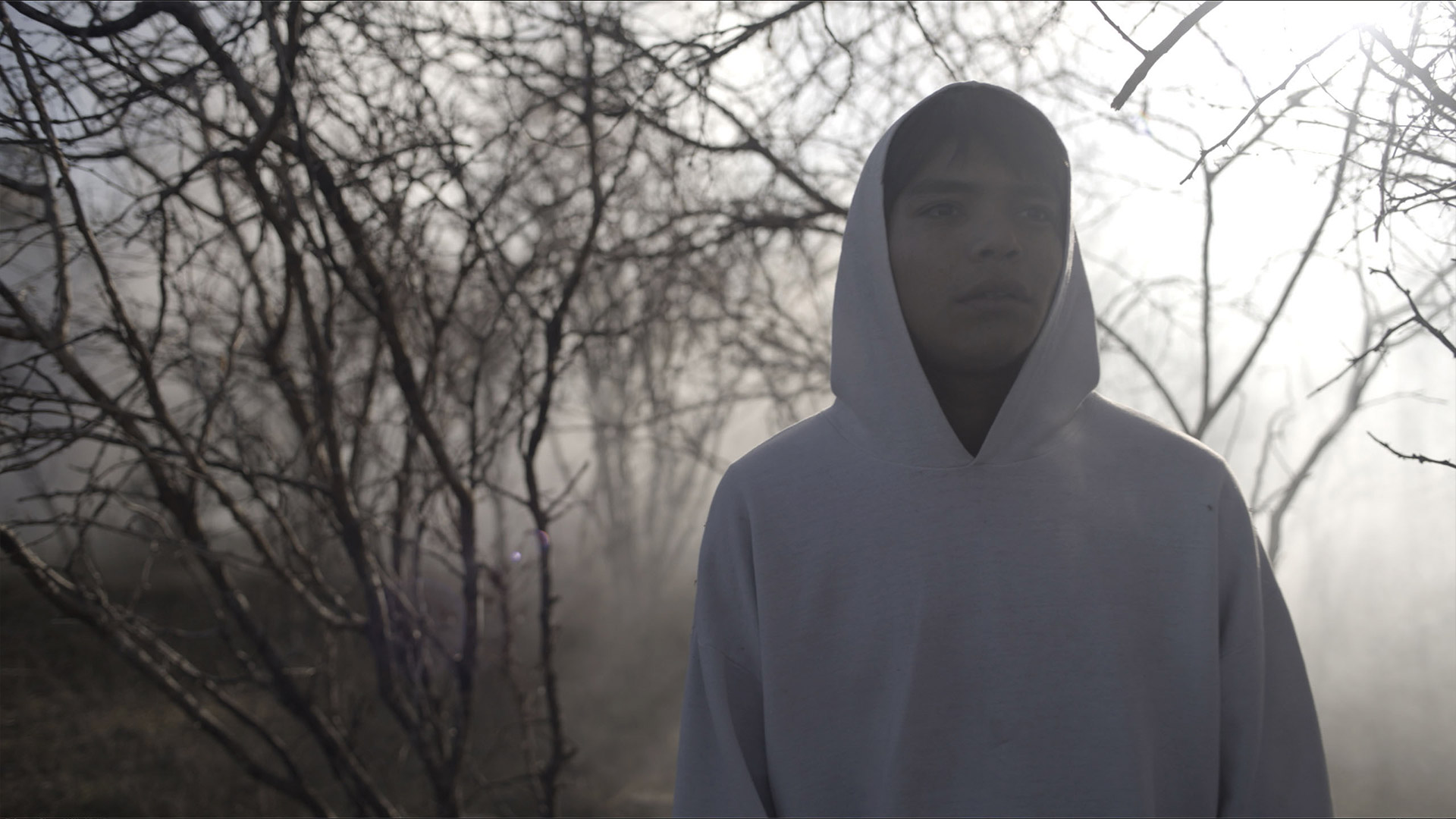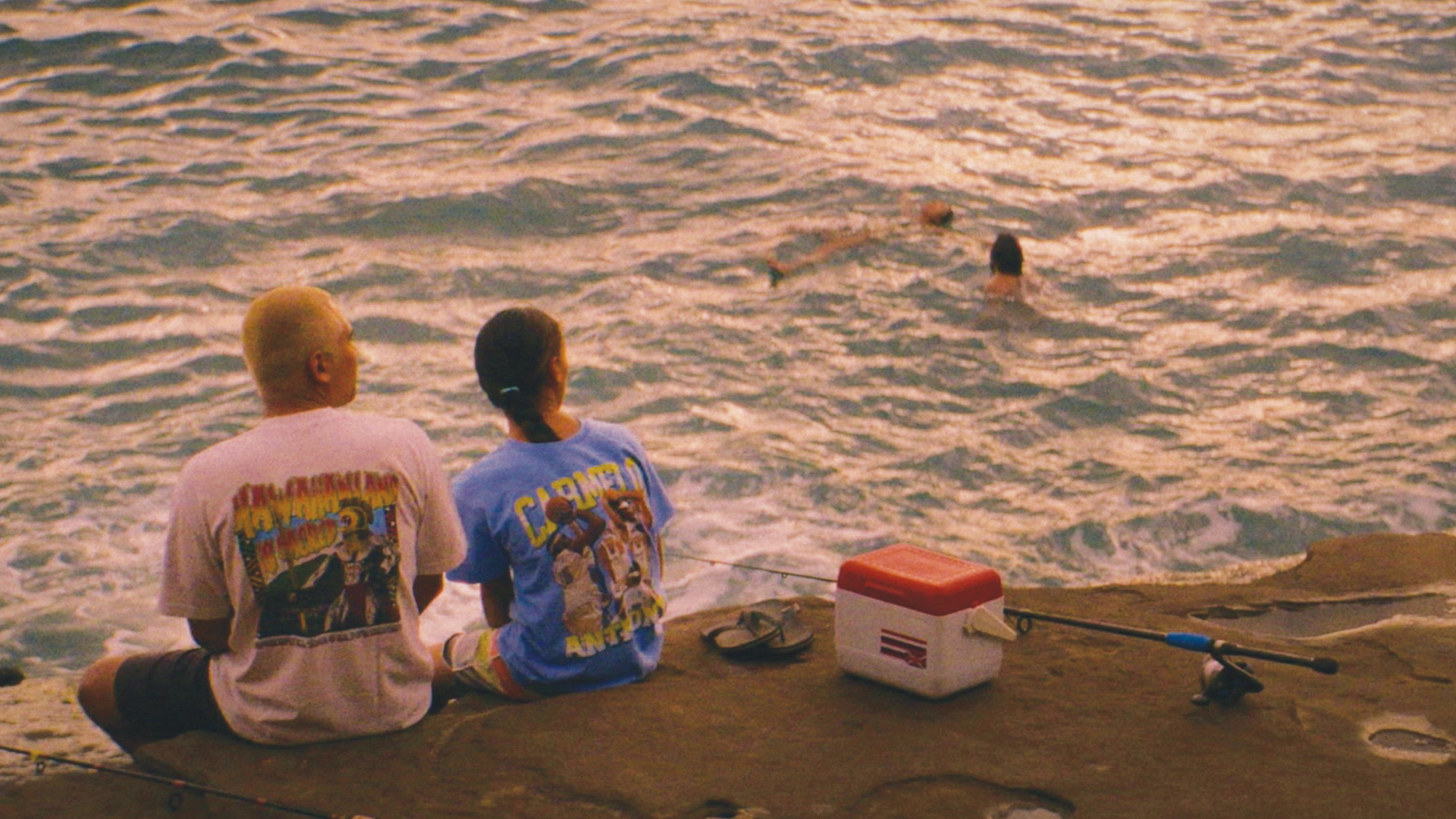
 Back in April, I was on tour with a band, and we happened to have a day off in Albuquerque. We filled it with a number of activities, from bowling to thrift store shopping and milkshake drinking — so when evening came and most others were ready to relax, one friend and I debated over watching Jonathan Glazer’s Under The Skin, which I had been hyping all day. He was being wishy-washy, though, and, unable to decide, he finally concluded that I should draw a tarot card to settle the issue. For those unfamiliar with tarot cards, they are more often used for more in-depth divination, but each card can also be assigned yes or no values, with varying degrees of power. The card I received in response to whether we should go watch the film was “The Sun”, which is generally known as “the happiest card in the tarot”, with very few negative aspects. Hence, drawing it symbolized an emphatic yes to our question.
Back in April, I was on tour with a band, and we happened to have a day off in Albuquerque. We filled it with a number of activities, from bowling to thrift store shopping and milkshake drinking — so when evening came and most others were ready to relax, one friend and I debated over watching Jonathan Glazer’s Under The Skin, which I had been hyping all day. He was being wishy-washy, though, and, unable to decide, he finally concluded that I should draw a tarot card to settle the issue. For those unfamiliar with tarot cards, they are more often used for more in-depth divination, but each card can also be assigned yes or no values, with varying degrees of power. The card I received in response to whether we should go watch the film was “The Sun”, which is generally known as “the happiest card in the tarot”, with very few negative aspects. Hence, drawing it symbolized an emphatic yes to our question.
Under The Skin was a fine film, but remarkably, what actually resonated with me more was the preview trailer for I Origins, which revolves around a series of synchronicities involving the number 11. As Michael Pitt’s character, Dr. Ian Grey, narrates for the trailer: “I look at the date; it’s 11:11. I look at the time; it’s 11:11. I start to see these 11’s, everywhere; when I followed them, I found these eyes. I’d like to tell you the story of the eyes that changed this world.”
Such synchronicities, staggering in their coincidental unlikelihood, ultimately bring Grey to meeting his incendiary love interest Sofi, played by the beautiful Astrid Bergès-Frisbey. The themes struck home immediately, in a spine-chilling kind of way; I, too, have had similar cosmic moments that have led to the discovery of significant individuals in my life — including the one I went to see the film with. Hence, given the nature of I Origins, which assigns meaning to every small symbol that leads to the larger unfolding of our collective lives, that circumstantial flip of the (tarot) coin, so to speak, really did provide a fascinating continuous build-up to my watching the film. (And it gets better…)
The Views Are Subjective — And Polarizing.
Like many of my favorite movies (Darren Aronofsky’s The Fountain comes to mind), I Origins is damned polarizing. It presently has 47% on Rotten Tomatoes, and reviews have critics gasping for air in both the blissfully astonished and offended, incredulous sense. Among the skeptics, one can see comments such as Josh Bell of Las Vegas Weekly‘s bitter remark of, “The movie’s musings are disingenuous at best and infuriating at worst, delivered with a hollow solemnity that the flowery story never warrants.”
It is clear that, as with many a metaphysically-minded film, the value you gain from I Origins depends on your relationship to the world at-large, which includes your spiritual sphere of knowledge and, perhaps, whether you think “flowery” is a good or bad thing. As a director, though, Mike Cahill also knows that the true purpose of art is not necessarily to please everyone.
“If they didn’t feel it, they didn’t feel it. No biggie,” says Cahill. “If three people respond to it, then I’ve found those three people that I want to have dinner with, and those are my like-minded spirit kind, like-minded peeps. And I’ll hang out with those people and engage with them with those ideas. We kind of live in cynical times, and that just comes with how it is.”
Indeed, we are no longer in the era where Carl Sagan’s Cosmos thrives with quotes like:
“We are the local embodiment of a Cosmos grown to self-awareness. We have begun to contemplate our origins: starstuff pondering the stars; organized assemblages of ten billion billion billion atoms considering the evolution of atoms; tracing the long journey by which, here at least, consciousness arose. Our loyalties are to the species and the planet. We speak for Earth. Our obligation to survive is owed not just to ourselves but also to that Cosmos, ancient and vast, from which we spring.”
Instead, we are in the era where Neil deGrasse Tyson’s Cosmos sees censorship on prime time television. Given this environment, it serves a scriptwriter well to do his research, which Cahill did.
“Modifying color-blind mice to see color; modifying worms that don’t have vision to have vision: those are real experiments done in labs today,” Cahill explains. “The idea of an eye being irreducibly complex and scientists proposing theories about the evolution of the eye have existed for a long time; Richard Dawkins is the one who sort of mapped out the evolution of the eye. But it’s in laboratories today that we can actually create physical, genetically-modified versions… I worked very, very hard, and very closely with molecular biologists to make this as accurate as possible.”
A number of small details contribute to the interpersonal development of the film’s characters, as well as tie in Cahill’s real-life filmmaking experience with the cinematic narrative. In one scene, Grey sits in a diner and his gaze lands upon Steve McCurry’s famous 1985 National Geographic photo of the green-eyed Afghan girl, which provides the original inspiration for I Origins‘ explorations into locating human beings through iris biometrics.
“When [McCurry] took that photograph, she came through a refugee camp in Pakistan… and every year, after that picture became more and more famous, people would write into National Geographic and Steve and ask, ‘What’s her name?'” Cahill details. “Seventeen years after that photograph, they went to go and try and find her, and the most striking feature they had was her eyes… scientists from this iris biometric company used this biometric algorithm… and eventually they found her…”
Cahill then began wondering, “What if you could find a person after they died, through the same method?”, thus spawning the point where the film’s metaphysical ideas begin to connect with its earlier scientific ideas. Its sci-fi label finally begins to poke through once Ian Grey sets out on a search for the reincarnated Sofi. Considering the unlikelihood that iris patterns actually extend through multiple lives, some suspension of disbelief is definitely required during this second part of this film, and the barrier to entry is vastly different for everyone. One such as myself, who already believes in past lives due to personal anecdotal evidence, might easily get on board — while less accepting critics without such experiences would need to jump over a mighty large hurdle. The fact that I Origins is set in a near future so closely resembling the present only increases the difficulty of suspending that disbelief.
The Details Unfold By Themselves.
What’s beautiful, though, is that the polarized reception to I Origins is a meta commentary on the subjective nature of spirituality itself, which is very much experience-oriented. Yet those who say that I Origins is full of “sloppy screenwriting” and “sloppy cinematography” are truly missing the film’s incredible attention to detail, which is anything but.
“This film is very carefully constructed to try and achieve a feeling,” explains Cahill. “It’s not a science paper, but it’s certainly a very well-researched work of art…”
Everything is well-contemplated to an unbelievably impressive degree, and peppered throughout the film are a number of markers to back up that assertion. Take, for instance, the film’s most ambitious shot — a double Vertigo shot which concludes during Grey’s dizzying journey through the number 11. A homage to Alfred Hitchcock’s invention of the Vertigo shot, and to Stanley Kubrick, who Cahill says “was innovating in every single movie ever”, the shot is damn near perfect on a conceptual as well as technical level.
“It’s rare that you would find yourself with an opportunity to do [a double vertigo shot], but because of the sort of blocking and construction of the shot — because there’s a reflection in the bus and there’s a billboard [behind the character] — it lent itself to [it],” explains Cahill, who had the luxury of using robotic Technocrane, a device where all settings and positions of a camera can be keyed in and replicated over and over again on a memorized timeline. “A vertigo shot just makes you feel literally like, ‘Whoooooa, I’m feeling this momenttttttt,’ and to do it and then 180 around to reveal what [the character is] looking at… I was using the right tool at the right time; it actually had a purpose.

One can also look to other subtle hints found throughout the film, similar to that of McCurry’s photograph in the diner; for example, due to the band’s futuristic leanings, Cahill purposely included Radiohead posters in the scene description of Grey’s apartment.
“All those little details were written in there as a characterization of Ian’s character. [Radiohead] in particular — Kid A is dedicated to the first human clone, whether it’s alive or not — and it’s very sort of instructive of what a real scientist is like today,” explains Cahill, who is related to scientists. “They’re not necessarily a stiff cliché version of people we see often in Hollywood movies. Scientists are interesting people. They can talk about music; they make love; they are passionate about the world; they just happen to put discovery on a higher scale of priority than things like making money or you know, whatever. They’re very noble, extraordinary, ordinary, relatable people, and capturing that is important.”
When Cahill was tracking down the rights to use the Radiohead poster, he soon found himself in talks with Radiohead’s manager, Bryce Edge, who was a fan of his previous film, Another Earth.
“Radiohead gave us all those songs to use for free, because — you know, the last film that I did, which was also kind of polarizing, apparently — they appreciated that. And that was a really reassuring feeling of: when you’re making art, you’re connecting with people maybe on the other side of the globe, and when I was writing, I was really grateful for that and felt really, really lucky. I still feel really lucky about that with the new work,” says Cahill, who expresses that, as an indie film, they could never have afforded a big-budget song.
The film’s soundtrack choices definitely lend quite a bit of weight to the film itself. “Dust It Off”, by French indie pop arteurs, The Dø, provides a wonderfully dreamy counterpart to the film’s romantic moments in a lyrically subjective way. Radiohead’s “Motion Picture Soundtrack” plays during the final moments of I Origins, but twas a stroke of incredible luck and synchronicity that the track ended up where it did.
“The part that’s weirdest is that I didn’t actually have it in mind for the final, final, final scene… We watched the movie, and Bryce said, ‘Do you ever think about Motion Picture Soundtrack for there?'” Cahill recalls. “And I took it, and literally placed it right there, where it was sort of silent. It was very temp at the time, and the break in the song, where it starts moving louder, occurs exactly when it cuts to the stairs, and when [Ian Grey] walks out the door, it says, ‘I will see you in the next life,’ and then it fades out. The timings were so precise that I didn’t have to change the cut; and we all looked at each other and said, ‘Alright, this was meant to be,’ and he was like, ‘Alright, you can have it.'”
The Meanings Are Self-Assigned.
The day after I watched I Origins at the Seattle International Film Festival, I was riding the bus home from Seattle to Portland. When I awoke from a nap, I Origins was fresh on my mind, and I pulled up Radiohead’s “Motion Picture Soundtrack”, plotting how I might fit it into my FM radio show later that day.
Throughout I Origins, doors, both open and closed, are representative of one’s willingness or unwillingness to enter into the great spiritual unknown. I thought again to Cahill’s story about how the sentence, “I will see you in the next life,” fit perfectly into the end of the film, when a set of doors open into a white void of sunlight, symbolic of personal transformation. It dawned on me then that the I had just done the same drive from Portland exactly one week prior, with the previously mentioned band, who I have always felt an intense past-life connection with. For a moment, I debated over whether that feeling was mutual, and whether that thought was rooted in reality or merely my own twisted fantasies. Yet right when I remembered that we stayed at a hotel near Emerald Queen Casino, I looked up to see the casino’s green and yellow billboard passing by in a blur. In my headphones, Radiohead’s “I will see you in the next life” line rang out, its exact timing within milliseconds of this locational specificity.
With such curious life happenings, what can I say about a film like I Origins, which polarizes to such a huge degree, except that it’s important that films like this are being made. The gap between the spiritual and the scientific may not be as big as we might think, especially as quantum physics makes it increasingly clear that we know much less than we ever thought about the way of the natural world. Perhaps the importance of art and sci-fi is to draw attention to this subjectivity.
“Science fiction is the literature of ideas, and you’re really able to use analogy to explain feelings that we have…” explains Cahill. “In the beginning, or at least in the way she’s presented, [Sofi] has one toe on the ground and the rest is sort of in the clouds, but she actually has a great deal of wisdom. That’s shown in the laboratory and she’s talking about the worm. She says, ‘You know, they have two senses and you modify them to have three; so it follows that our five senses are by no means the limit.’ So in a way, she uses his work as an analogy for her point of view, and all of a sudden, and he realizes that. And I think that’s kind of, in a way, what science fiction does; it uses analogy to get it closer to some truth, hopefully.”
“The same sort of thing is in this great book called Flatlands by Edwin Abbott… in it, a line falls in love with a sphere, and the line can only experience the sphere as a line that grows longer and shrinks shorter, based on whether the sphere is going in or out of the plane,” Cahill continues. “It’s a beautiful book to explain perception and how many dimensions we can perceive. Any scientist that is trying to grasp with coincidence, or intuitive feelings of, ‘Oh, I feel like I’ve known you forever,’ or whatever sort of inexplicable things that often are the fuel for conspiracy theories or religious narrative: it’s very easy to just say, ‘Wait a second; our perception is limited to these five senses and things we can test with scientific method,’ but there’s totally a domain beyond that.”
Ω









Beautiful article, weaving a personal legend.
<3